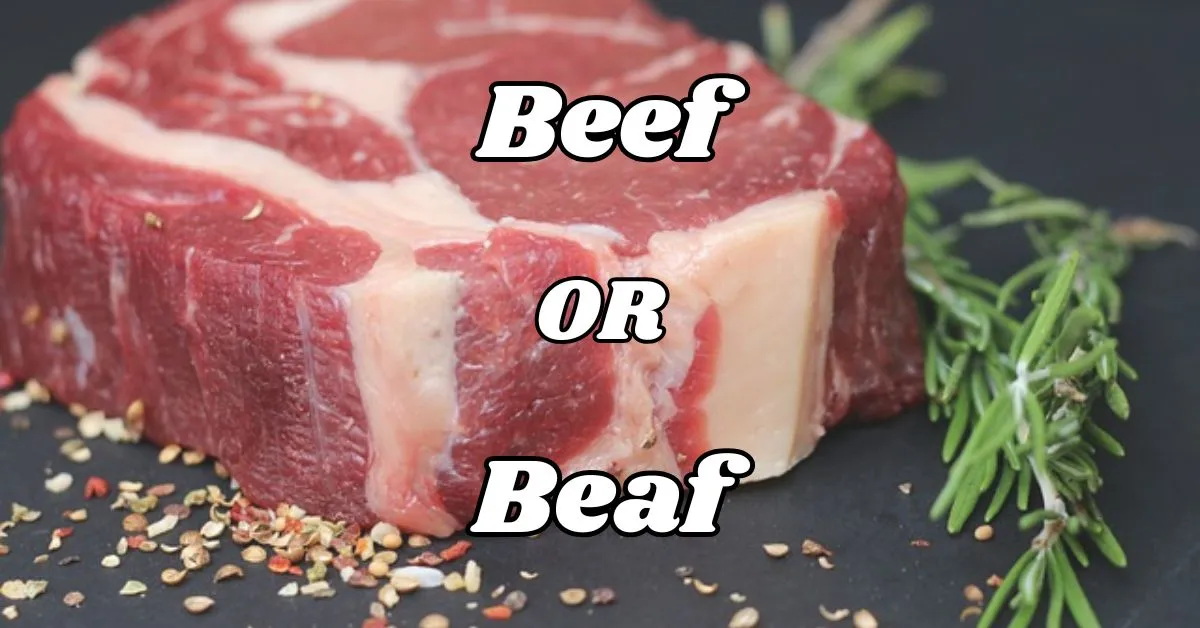Beef or Beaf: This seemingly simple question often trips up even seasoned writers. This article serves as a comprehensive guide to understanding the correct spelling and diverse meanings of “beef,” while dispelling the common misspelling “beaf.”
We’ll explore “beef” in its culinary context, from ground beef to prime rib, and its less literal uses, such as having a “beef” with someone. This spelling correction and grammar check resource will clarify the difference between beef vs beaf, providing word usage tips, English grammar insights, and examples in natural English.
Whether you’re concerned about beef prices, discussing beef dishes, or simply want to improve your English writing, this guide will ensure you use “beef” correctly every time, avoiding the typographical error of “beaf.”
Quick Summary
The difference between beef and beaf is simple: beef is the correct spelling, referring to the meat from cattle, while beaf is a typo, an incorrect spelling.
This article will focus primarily on the correct spelling, “beef,” and its various meanings and usages, from its culinary use in dishes like beef patties to its metaphorical use in describing a disagreement. Think of this as your personal spelling checker and grammar check for “beef.“
Difference Between Beef vs Beaf
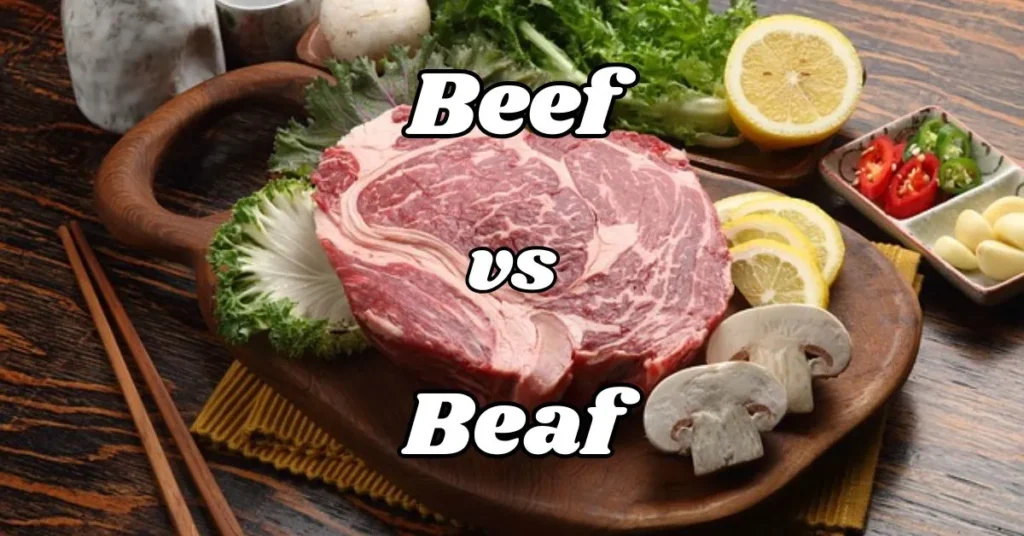
The key difference between beef and beaf is purely a matter of spelling correction. “Beef” is the standard English word, while “beaf” is a common typographical error. Think of it like this: you wouldn’t write “teh” instead of “the,” and you shouldn’t write “beaf” instead of “beef.”
This article serves as a helpful proofreading tool, ensuring your English grammar is spot-on when discussing this popular cow meat.
Origins of the Word Beef
The word “beef” has two distinct origins. Around 1300, it emerged from Old French and Latin roots, referring to both live cattle and their meat. The plural for live cattle was originally “beeves.”
Later, in the late 19th century, “beef” developed a slang meaning in American English: “to complain.” This usage likely stemmed from soldier complaints about beef rations. Thus, “beef” can refer to both food and a grievance.
Beef: Definition and Usage
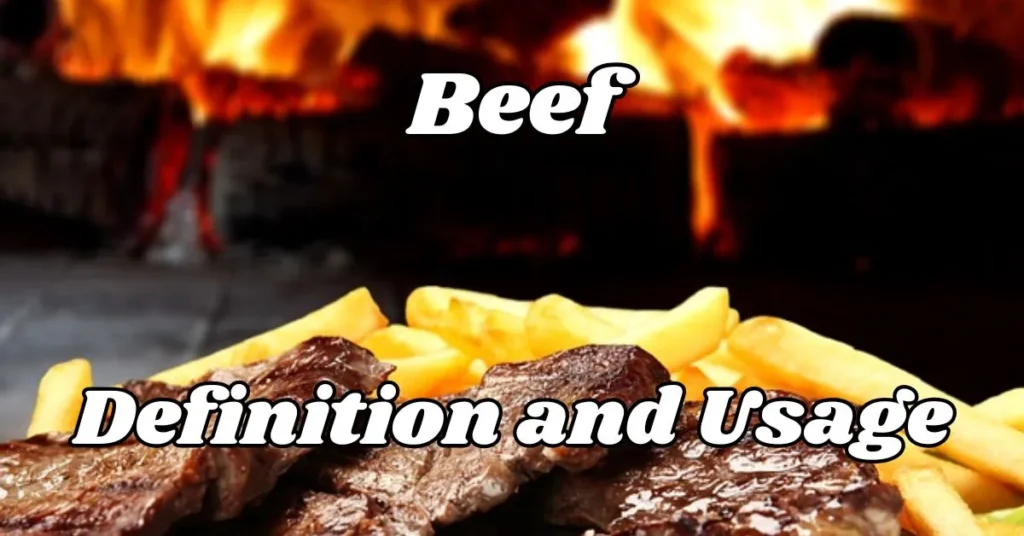
“Beef” primarily refers to the meat obtained from cattle, a staple in many cuisines worldwide. From succulent steaks to hearty stews, beef offers diverse culinary applications. Beyond its culinary meaning, “beef” can also signify a complaint or grievance.
For instance, someone might have “beef” with a coworker. This dual meaning adds complexity to the word’s usage, requiring careful attention to context. Understanding both definitions is crucial for effective communication.
Beef Definition
As a noun, “beef” is defined as the flesh of cattle used as food. This encompasses various cuts and preparations, each with unique characteristics and culinary uses. Think of ground beef for burgers, tenderloin for elegant dinners, or brisket for slow-cooked barbecue.
Furthermore, “beef” can denote a complaint or grievance, reflecting a sense of dissatisfaction or conflict. This figurative use of “beef” adds a layer of social meaning to the term.
Uses of Beef in a Sentence
- I’m grilling some delicious beef steaks tonight.
- The restaurant is known for its high-quality beef.
- He had a beef with his neighbor about the loud music.
- There’s a lot of beef between the two rival companies.
- She ordered a roast beef sandwich for lunch.
Synonyms of Beef
- Steak
- Roast
- Chuck
- Brisket
- Tenderloin
- Sirloin
- Ribeye
- Ground beef
- Veal (younger beef)
- Ox
Beaf: Definition and Usage
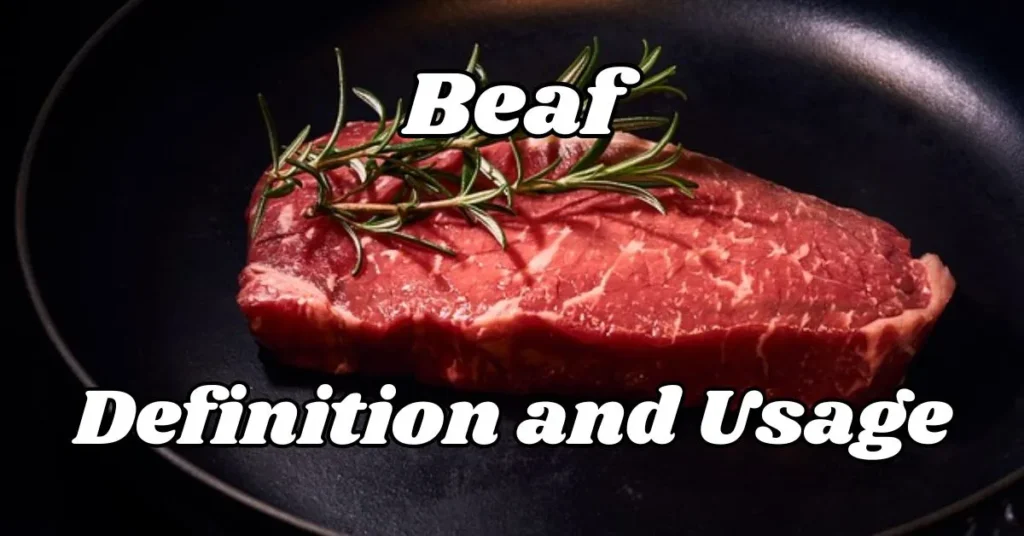
“Beaf” is simply a misspelling of “beef.” It has no recognized definition or standard usage in the English language. Using “beaf” instead of “beef” is a common error, often flagged by spell-checkers and grammar tools.
Correct spelling is crucial for clear communication, especially in formal writing. Remember, the correct spelling is always “beef,” whether referring to the meat or a complaint.
Beaf Definition
“Beaf” is not a word. It carries no meaning in standard English dictionaries or usage guides. It’s a common misspelling of “beef,” likely arising from a simple typographical error.
Relying on spell-check and proofreading can help avoid this mistake and ensure accurate writing. Always double-check your spelling, especially when discussing food or expressing grievances.
Uses of Beaf in a Sentence
Since “beaf” is not a word, it cannot be used in a sentence correctly. Any instance of “beaf” should be corrected to “beef.” Using contextual embeddings and deep learning, modern language models can easily identify and correct this spelling error correction.
- “I want some beef,” not “I want some beaf.”
- “The beef stew is delicious,” not “The beaf stew is delicious.”
- “There’s a lot of beef between them,” not “There’s a lot of beaf between them.”
- “The price of beef is high,” not “The price of beaf is high.”
- “He raises beef cattle,” not “He raises beaf cattle.”
Side by Side Comparison
| Feature | Beef | Beaf |
| Spelling | Correct | Incorrect spelling |
| Meaning | Meat, complaint | None |
| Usage | Common | None |
Everyday Usage Examples
“Beef” appears frequently in everyday conversations and writing. We discuss “beef prices” at the grocery store, order “beef burgers” at restaurants, and might even have “beef” with a neighbor over a noisy party.
These examples showcase the word’s versatility, spanning culinary and social contexts. Understanding these common usages is key to mastering the English language.
Examples of Beef in Context
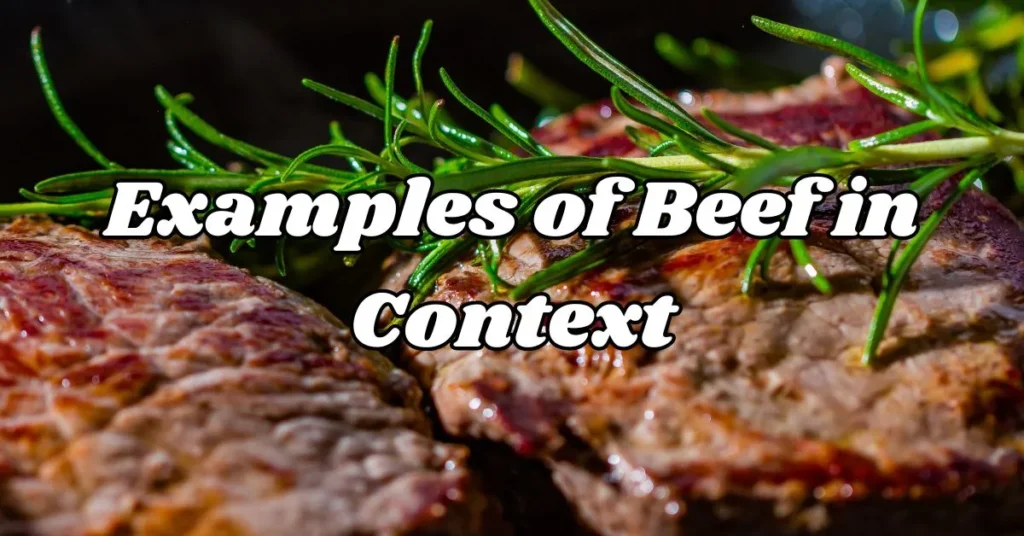
- The butcher recommended a nice cut of beef for the stew.
- The price of beef has been rising lately.
- They settled their beef over the parking spot.
- This beef jerky is so flavorful.
- She prefers lean beef for her diet.
Examples of Beaf in Context
Since “beaf” is incorrect, these examples demonstrate its misuse:
- “I want to buy some beaf.” (Incorrect)
- “The beaf was delicious.” (Incorrect)
- “He had a beaf with his boss.” (Incorrect)
- “This beaf recipe looks interesting.” (Incorrect)
- “Beaf is my favorite meat.” (Incorrect)
Common Mistakes
The most frequent mistake involving “beef” is misspelling it as “beaf.” This typographical error can easily be avoided by remembering the “ee” in “beef.” Another common mistake is confusing the two distinct meanings of “beef” the meat and the complaint.
Paying close attention to context is crucial for using “beef” correctly and avoiding misinterpretations.
Tips to Avoid the Mistakes
- Always double-check your spelling.
- Remember the “ee” in “beef” like in “see.”
- Use spell-check tools.
- Read your writing aloud.
- Practice writing the word correctly.
Tips to Remember the Differences
- Associate “beef” with the image of a cow.
- Remember that “beaf” looks and sounds wrong.
- Think of the delicious taste of beef.
- Use mnemonic devices.
- Practice writing and speaking the word correctly.
More Article: Mistrustful vs Distrustful: What’s the Difference
FAQS: Beef or Beaf
Is it Beef or Beaf?
It is always “beef.” “Beaf” is a misspelling and not a recognized word in the English language.
Is Beaf grammatically correct?
No, “beaf” is not grammatically correct. It is a misspelling of “beef,” which is the correct term.
What does beaf stand for?
“Beaf” does not stand for anything. It is a misspelling of “beef” and has no meaning.
Does beef mean fight?
Yes, “beef” can mean a complaint or disagreement, similar to a fight or conflict. However, its primary meaning is the meat from cattle.
Conclusion
In the debate of beef or beaf, the answer is definitively beef. This article has explored the dual nature of beef, from its culinary significance as a versatile meat to its figurative use as a term for complaint.
Understanding the correct spelling and diverse meanings of beef is crucial for clear communication. Remember, “beaf” is simply a misspelling and holds no legitimate meaning.
By mastering the proper usage of beef, you enhance your English writing and avoid common errors. So, the next time you’re discussing food or airing a grievance, confidently choose beef.
Related Post: Anual or Annual: What’s the Difference

